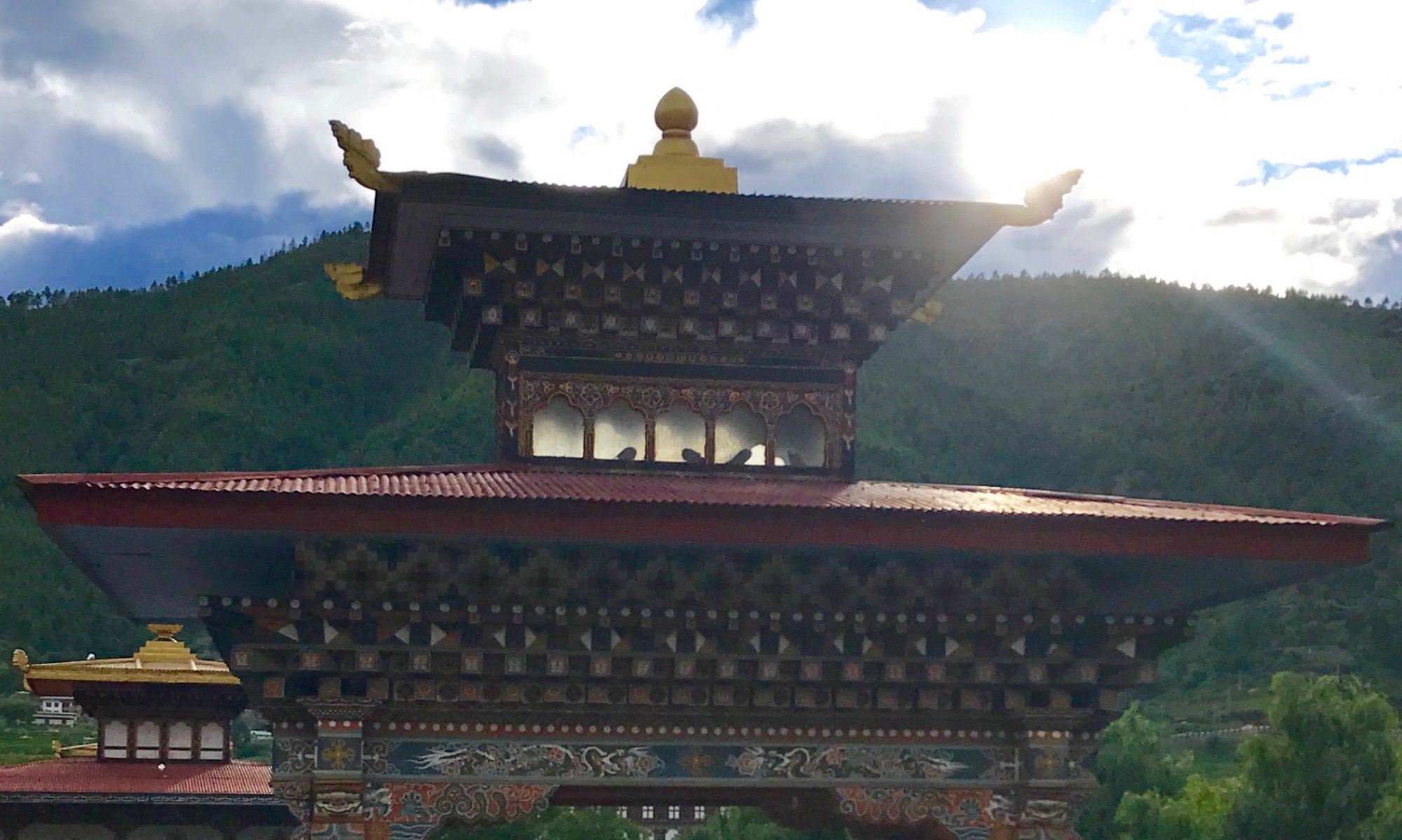After many false starts, we finally made it to Rangjung with Pema!
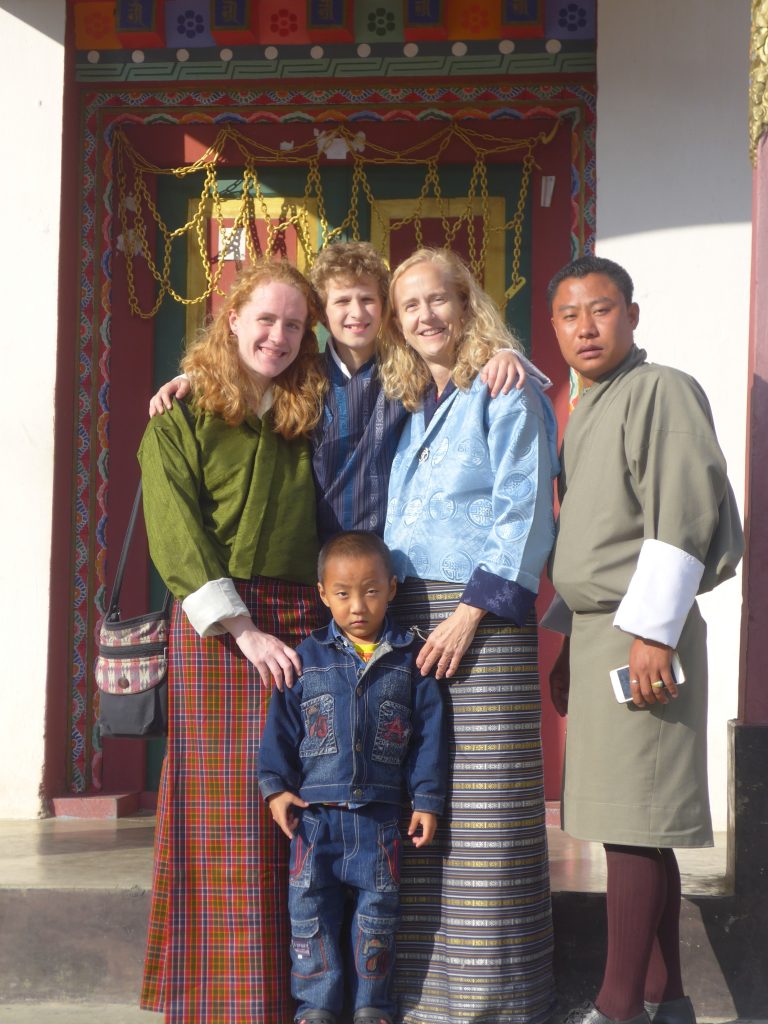
The idea for the trip began as I chatted with Pema about his family, who still live in Rangjung: his wife works for the BHU (Basic Health Unit) there, and she cares for their five-year-old son and small daughter. Pema only sees them every few weeks, because to travel from Kanglung to Rangjung at the weekend requires three vehicles: bus service from Kanglung to Trashigang, Trashigang to a tiny roadstop whose name I’ve forgotten, then another vehicle on to Rangjung. “Perhaps you could drive us there and see your family,” I suggested. But then the truck was out of fuel one weekend, the President needed it another weekend, and James was busy with an entrepreneurship event a further weekend.
Pema arranged for us to stay at the monastery guest house in Rangjung. We started our journey from Kanglung around mid-morning, after I finished another round of commenting on student essays, first and second drafts.
This was our first trip beyond Trashigang, and we were struck by the appearance of the dzong as we descended the valley.
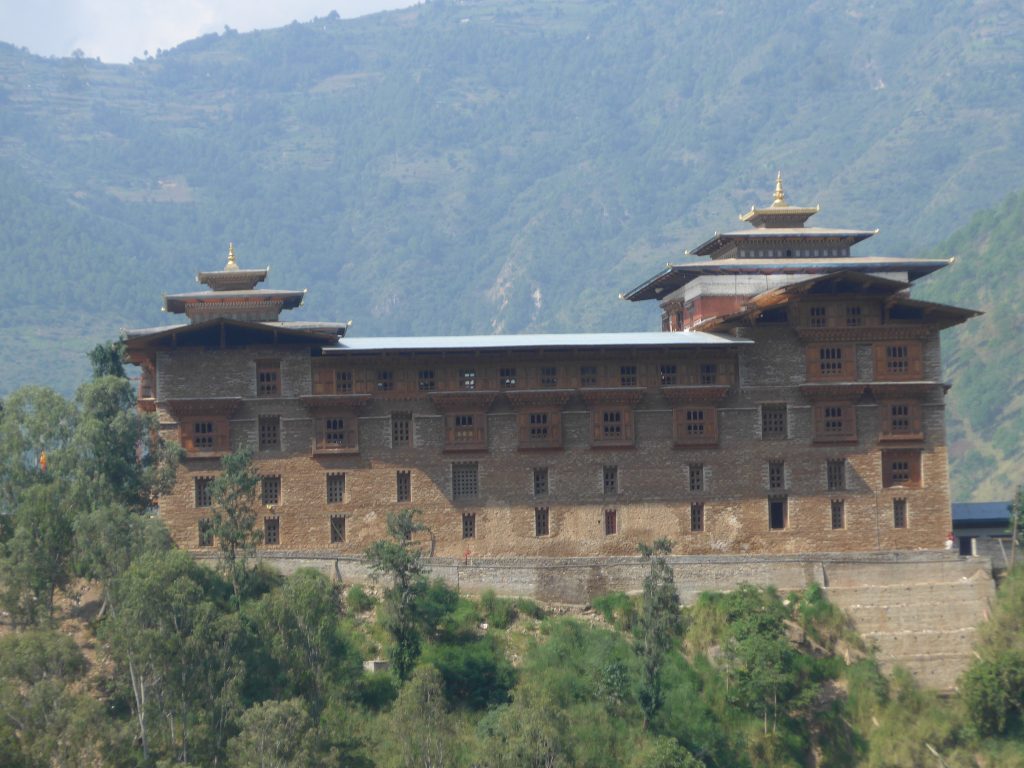
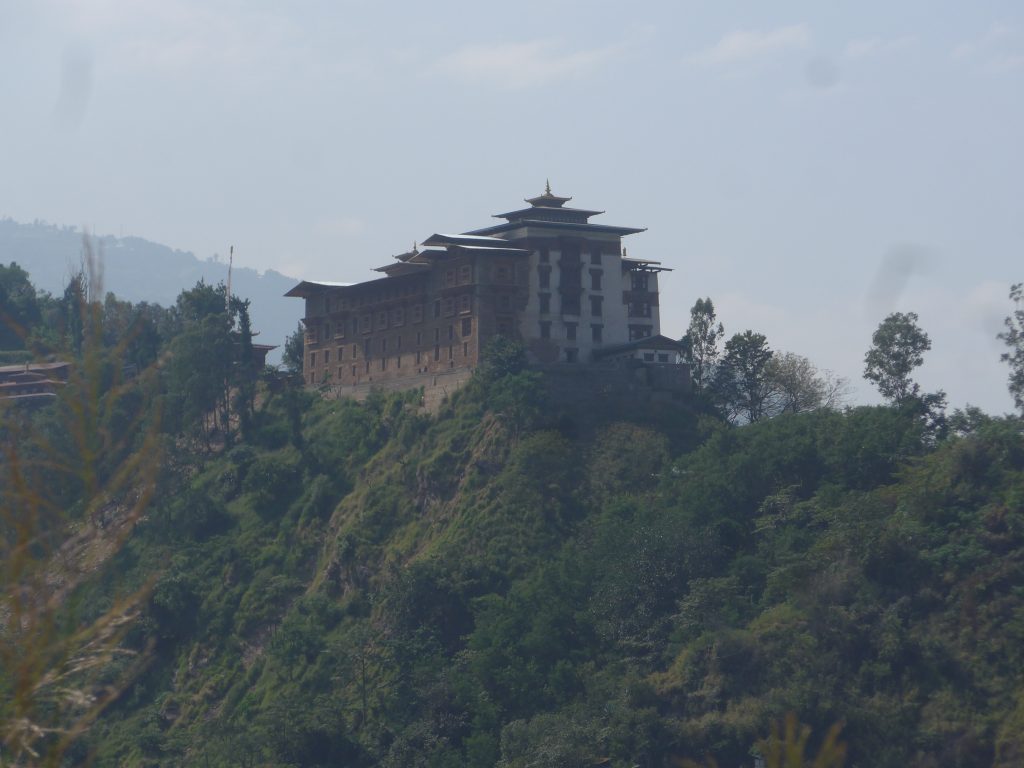
To get to Rangjung, you travel up a river valley, staying a little lower (and warmer) than Kanglung.
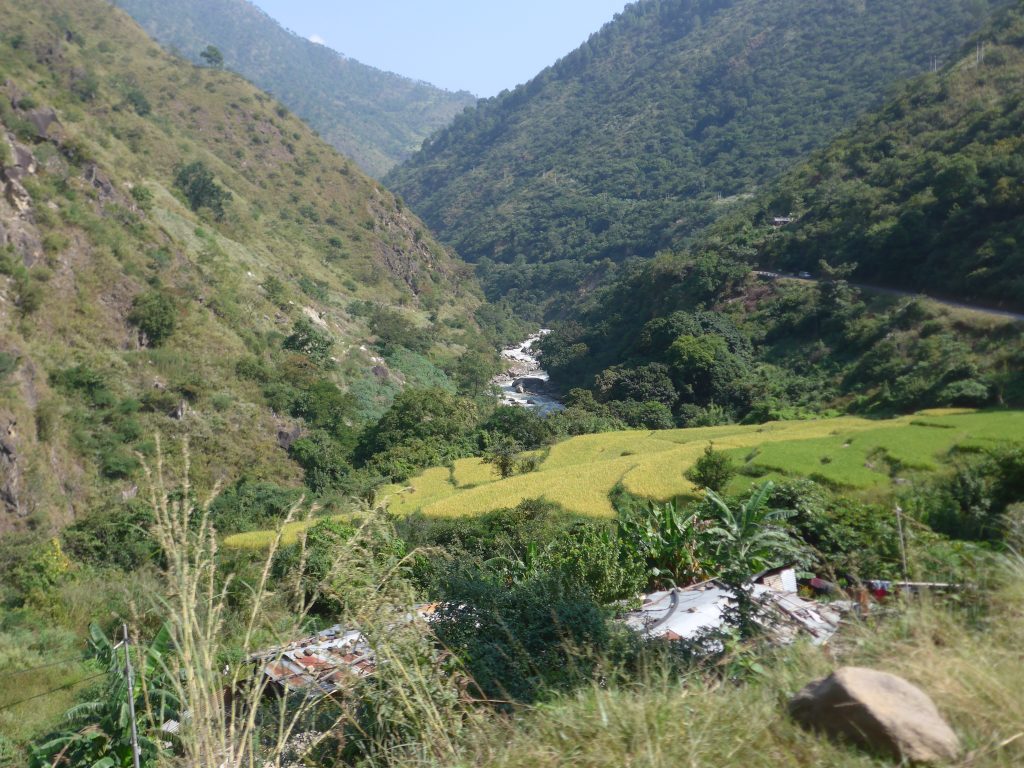
We are always struck by the Indian road crews and the way they cope with hard labor and difficult living conditions. Someday we hope to talk to the people working here, rather than simply driving by.
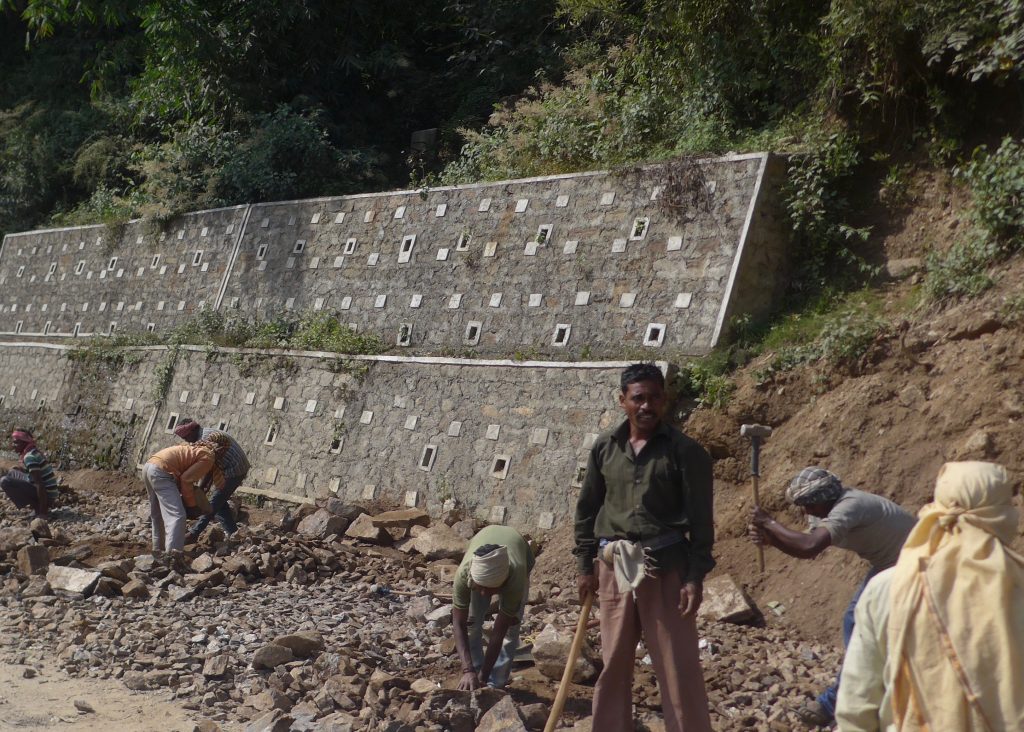
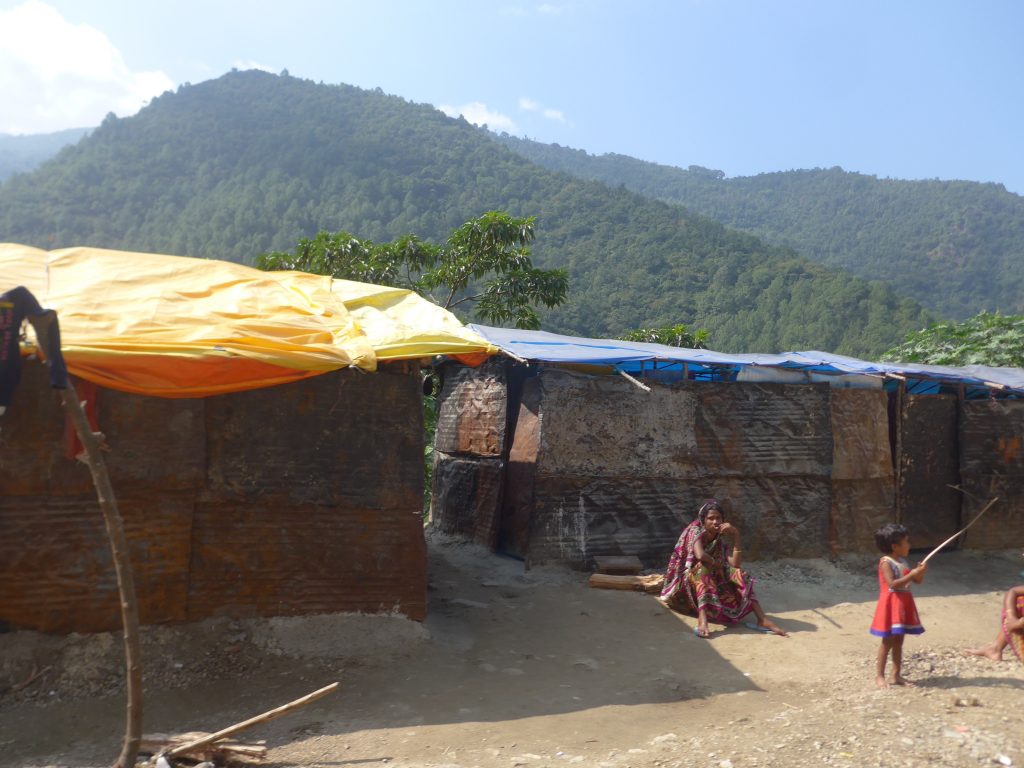
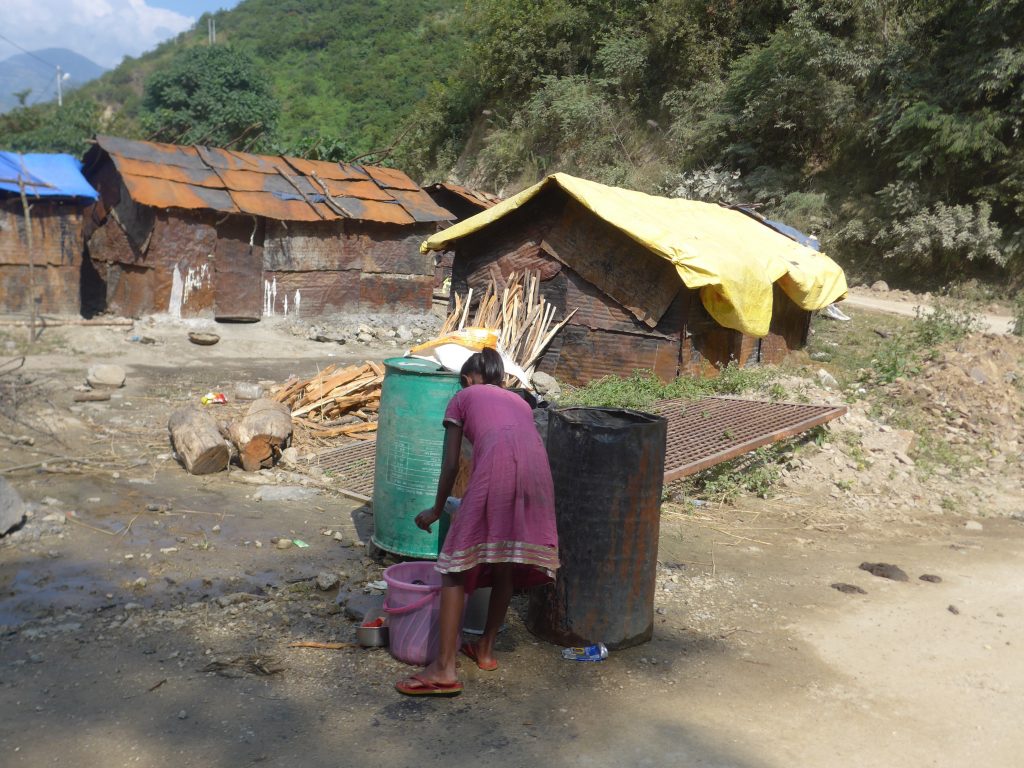
We stopped at the monastery guesthouse to drop our bags and then we continued further up the mountain, to the town of Radi, and to what appears on Googlemaps as “Dudjom Tersar Monastery” though it is actually a nunnery. Radi is known as “the rice basket of the east” and we were right in the middle of harvest season. We saw harvesting and threshing in the fields, and rice stalks piled up high in trees and man-made frames to keep the cattle from eating them before winter. (Cattle can still find greens to consume, but in January and February, they will need the dried rice stalks to sustain life.)
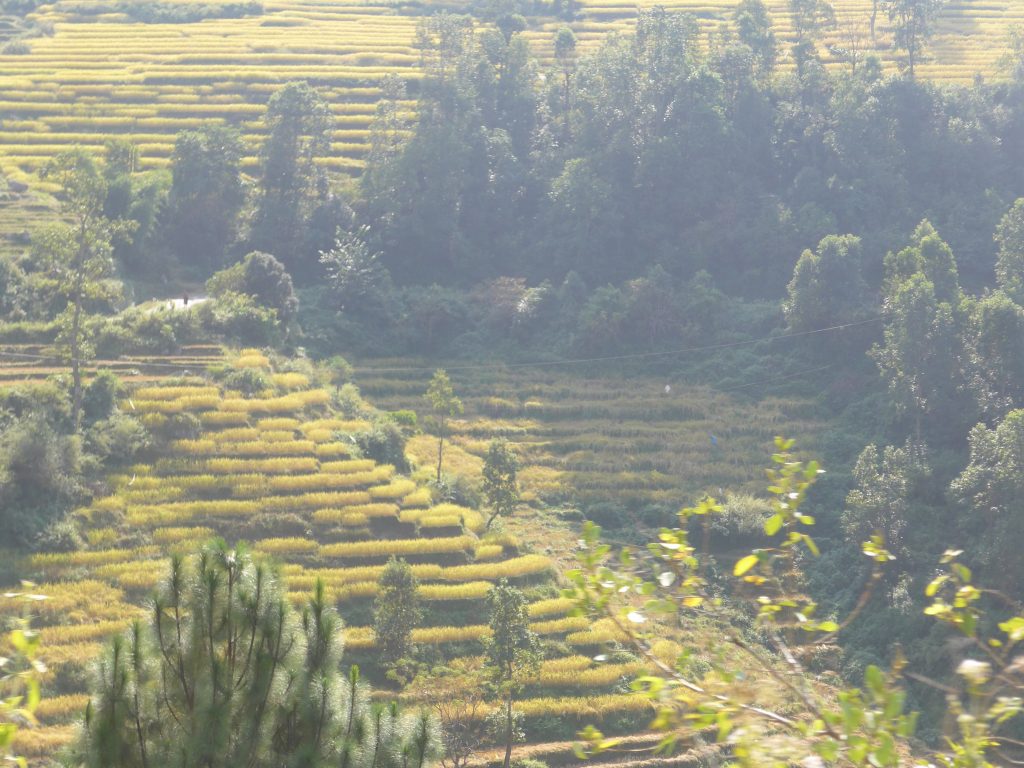
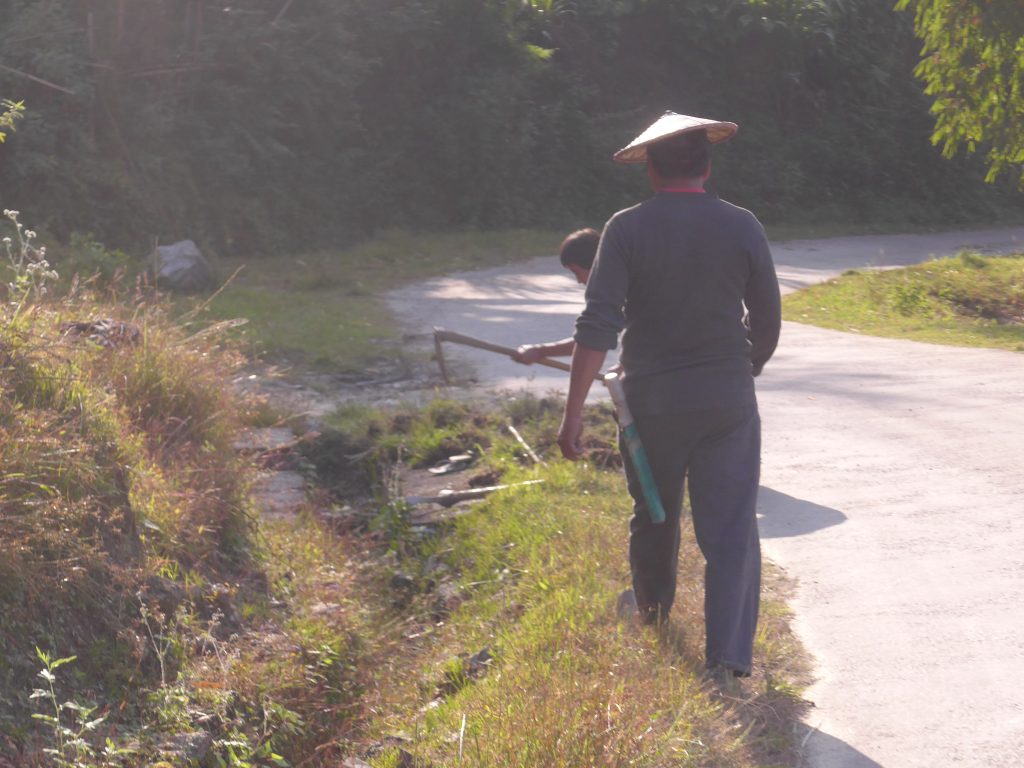
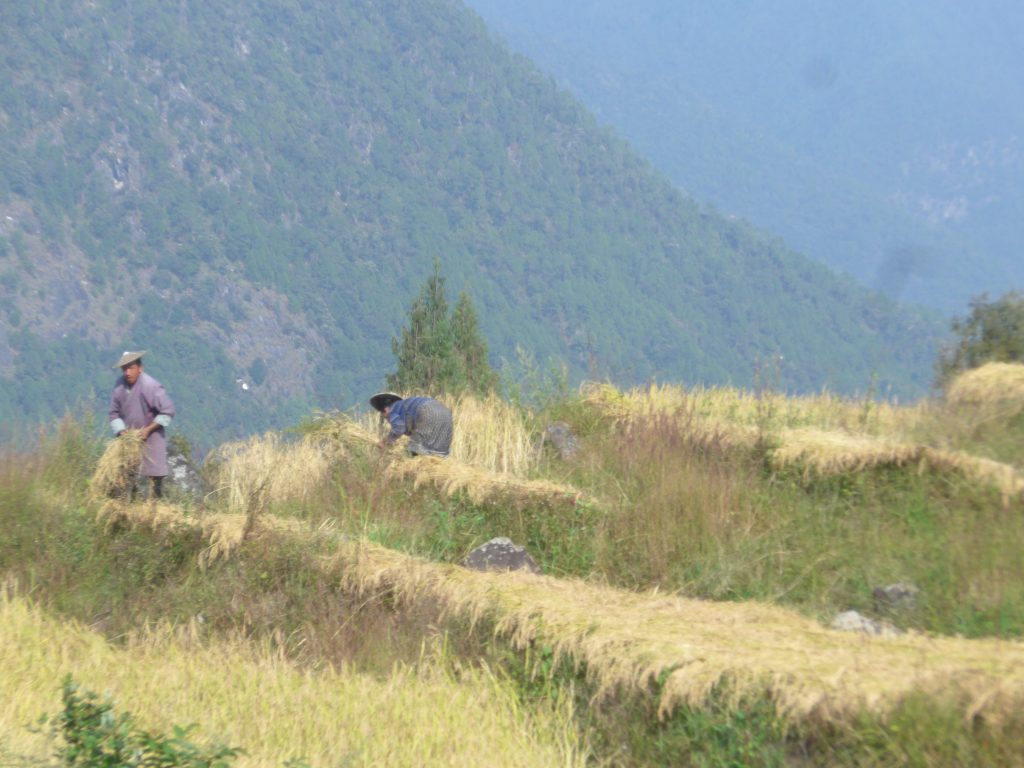
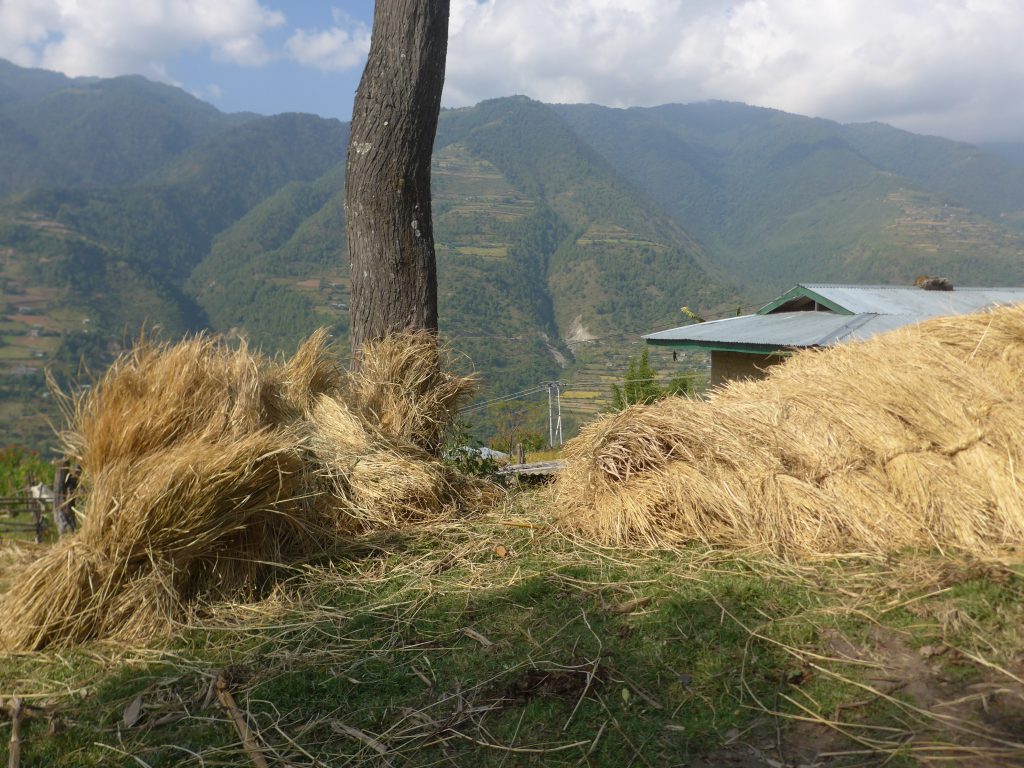
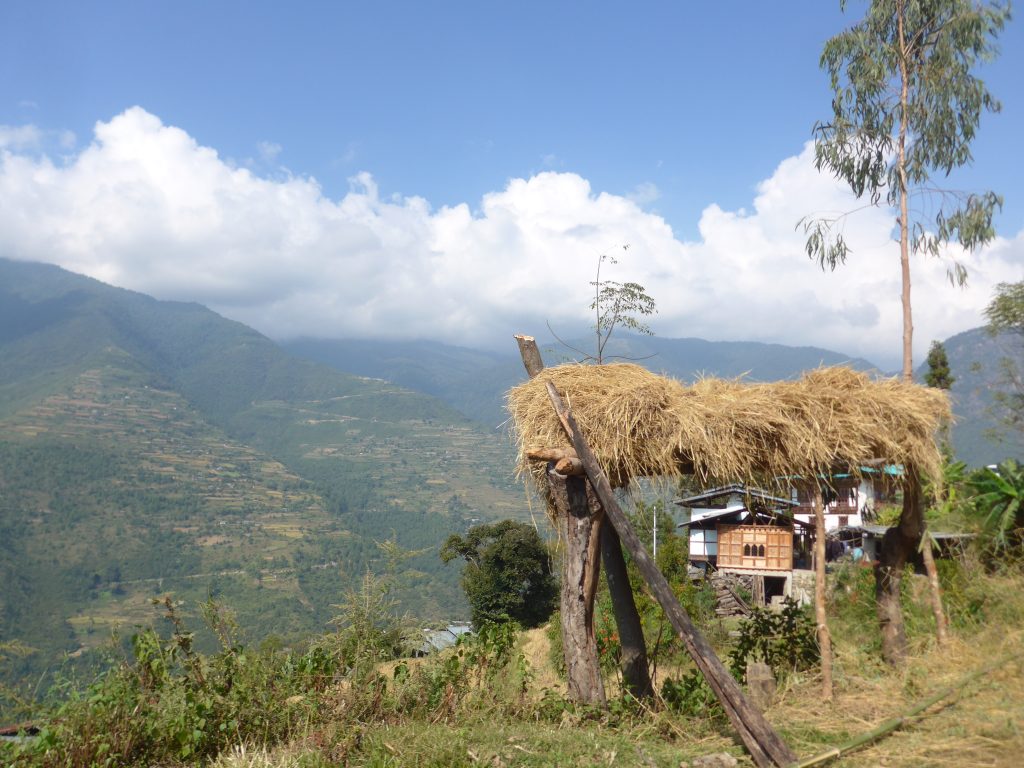
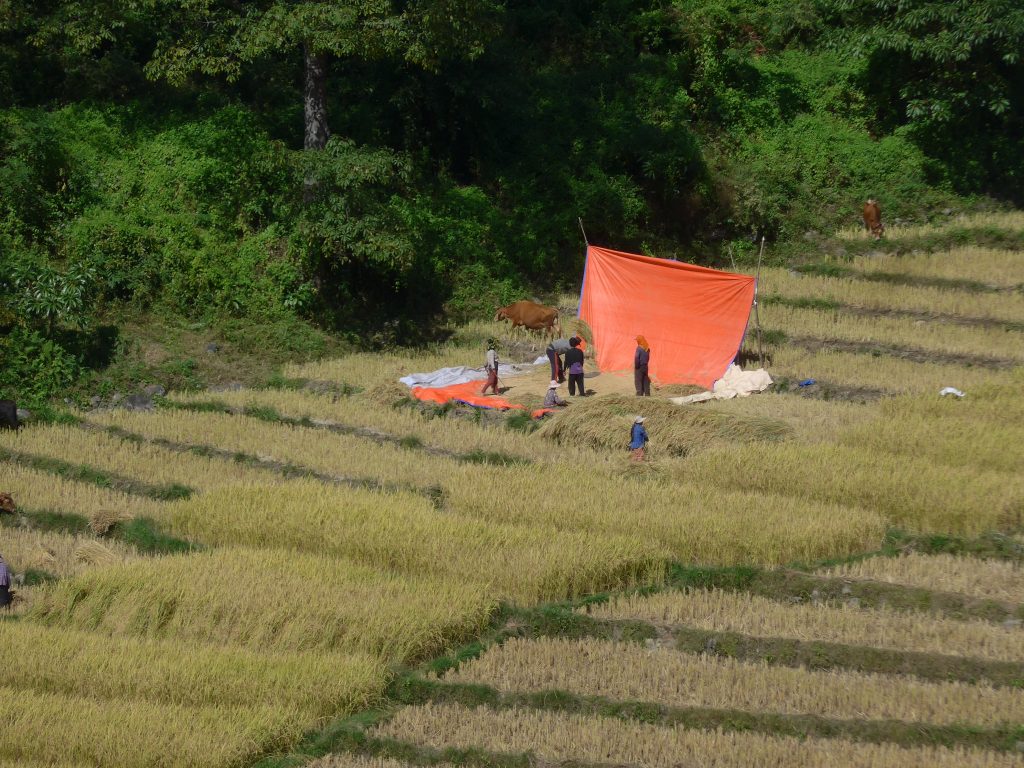
At the nunnery, both nuns and community members were hard at work on new construction. We felt we should roll up our kiras and ghos and join in, but we weren’t sure we would actually make much of a contribution. The nunnery is associated with the monastery (also known as the Rangjung Woesel Chhoeling Institute of Buddhist Studies).
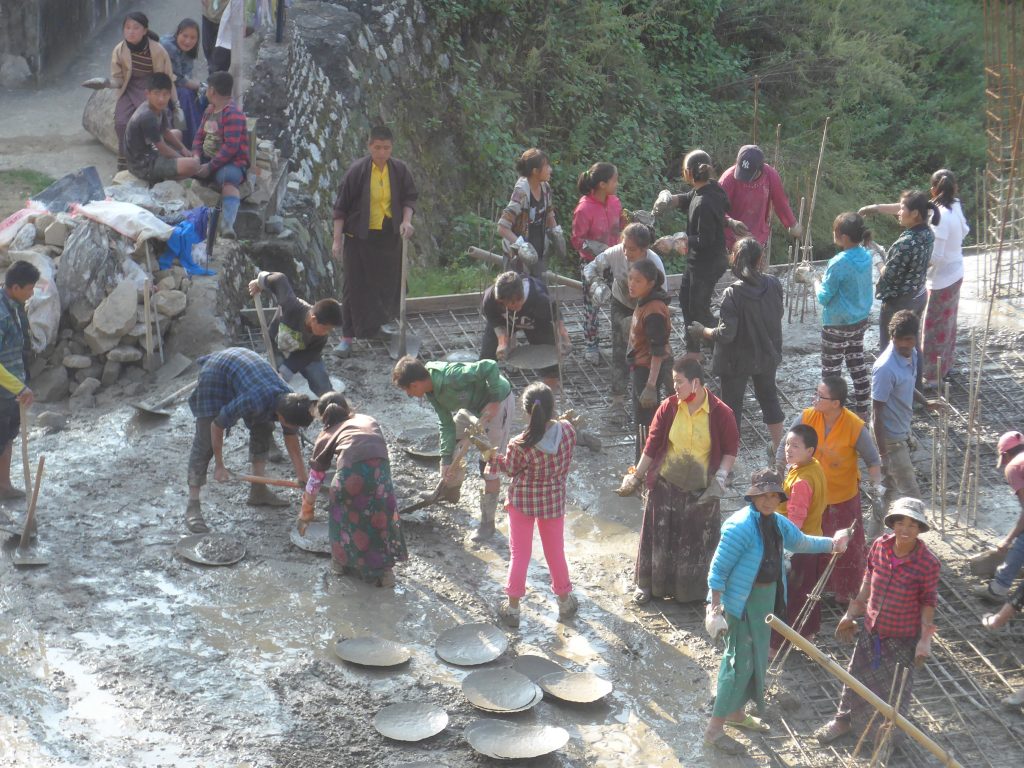
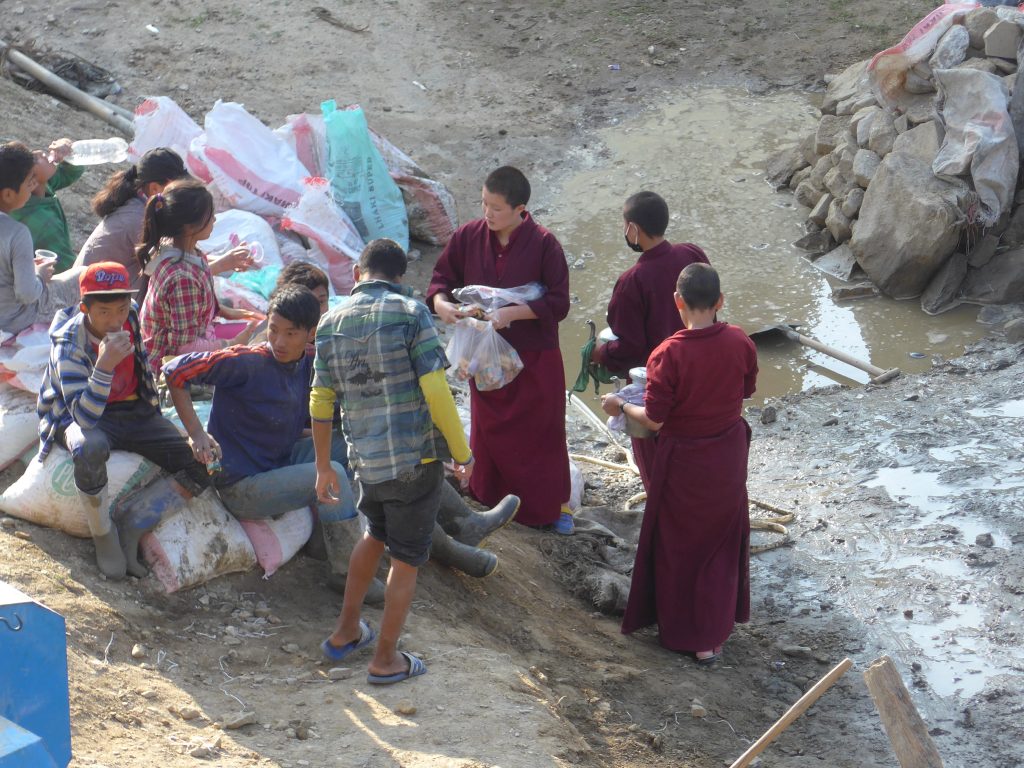
Without an interpreter, we had trouble processing the many elements of the nunnery we were shown: meditation halls, paintings, the library, and more. But the beauty of setting and people was immediately accessible.
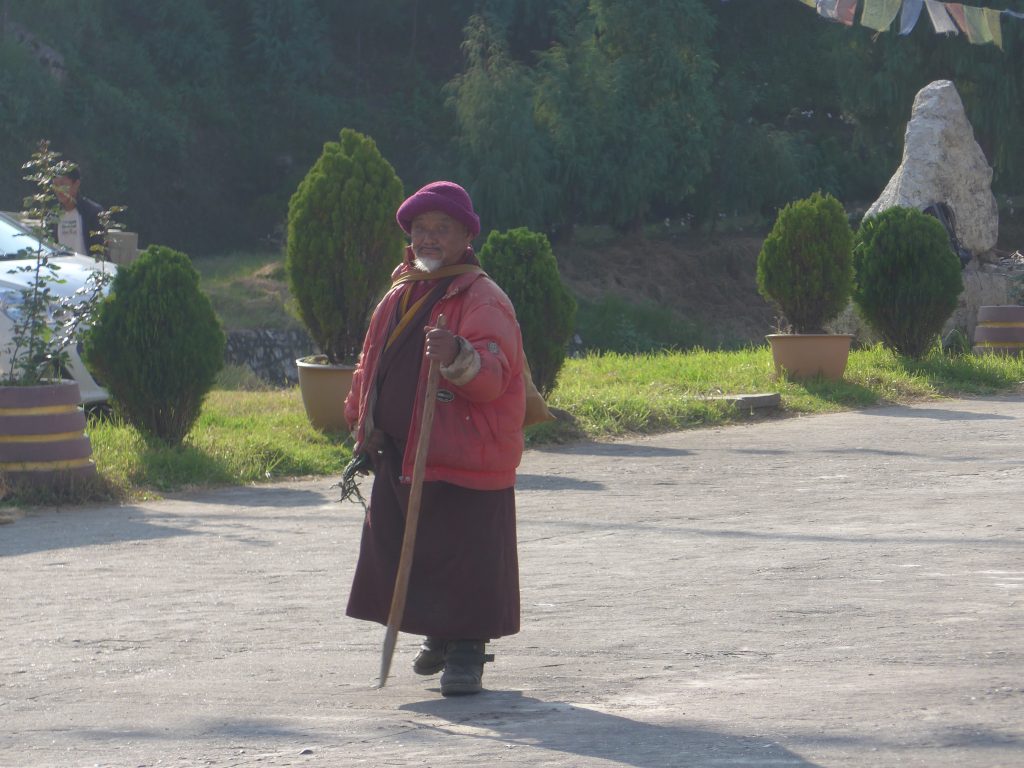
On the way back down from Radi to Rangjung, we stopped for Pema to fill up some bottles with holy water from a top on the hillside.
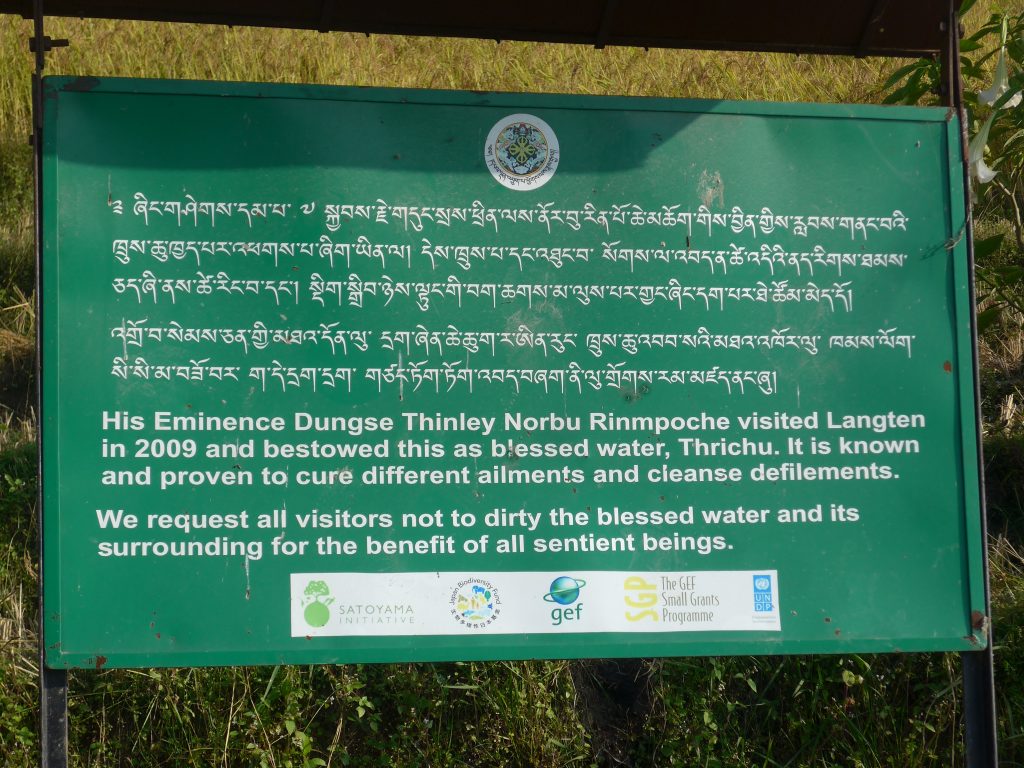
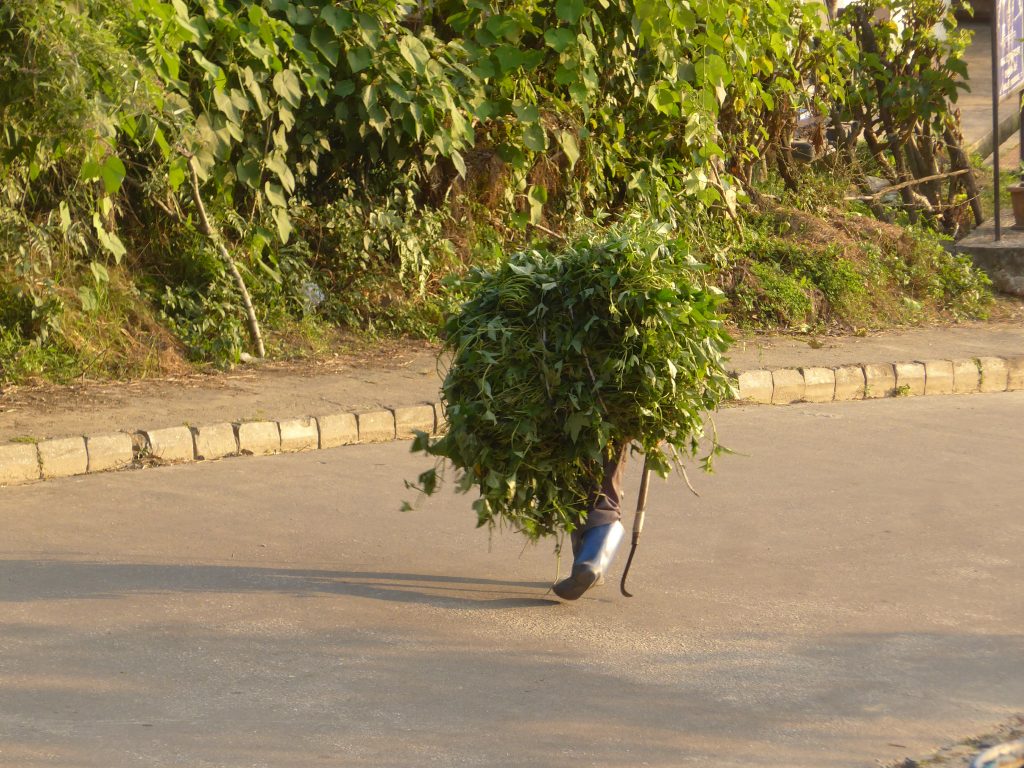
Back at the monastery guesthouse, we chatted with Karma, the monk who manages the guesthouse. He is a friend of Pema’s, and it turns out he is also the monk I met once on the Yonphula path: I was heading down at speed, and he was heading up. His family is from a village near Yonphula.
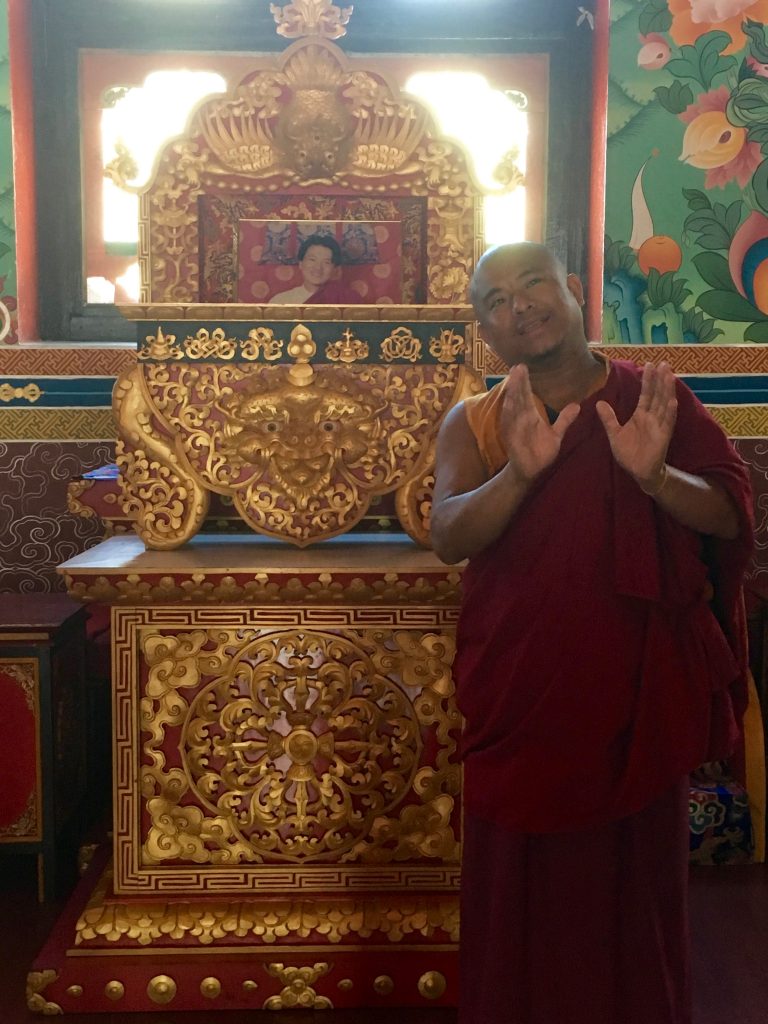
Karma was full of theological thoughts—the story that Christ’s missing years were spent in India learning Buddhism (which I have also heard elsewhere), plus some other Christian-Buddhist connections which seemed a little dubious–or wishful–to me. (Sorry, Karma, for doubting!) The photo above is actually from our second day at Rangjung, where Karma gave us a wonderful tour of the temple.
First James, then Jeremy and I went for a walk through the gathering dusk.
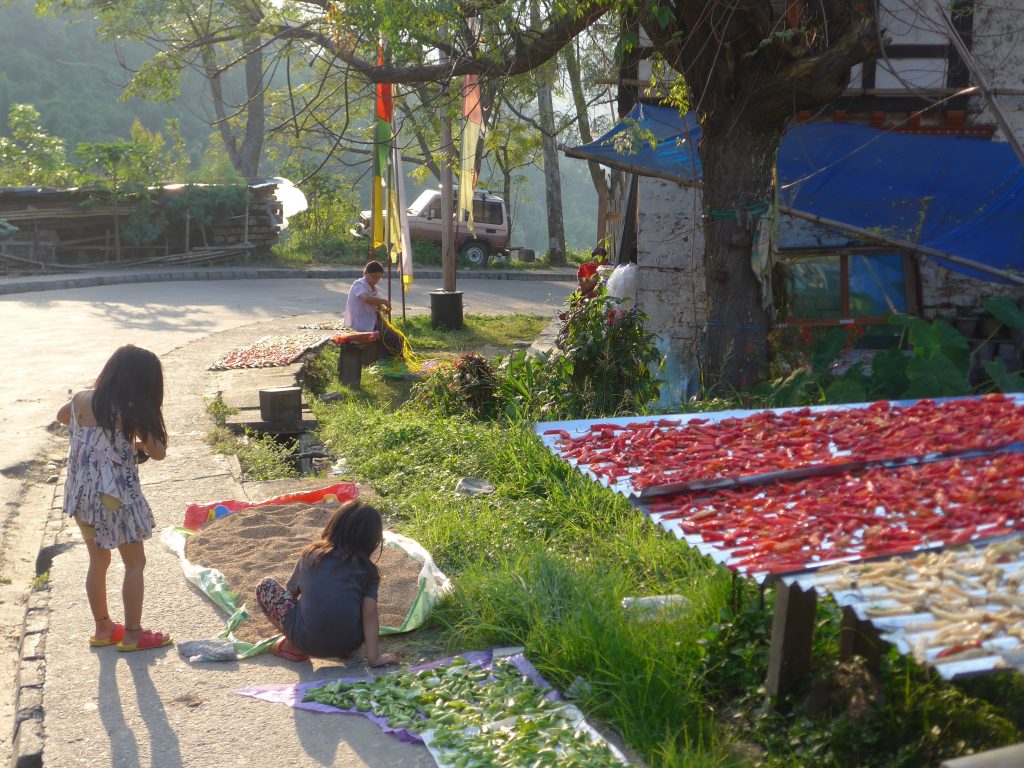
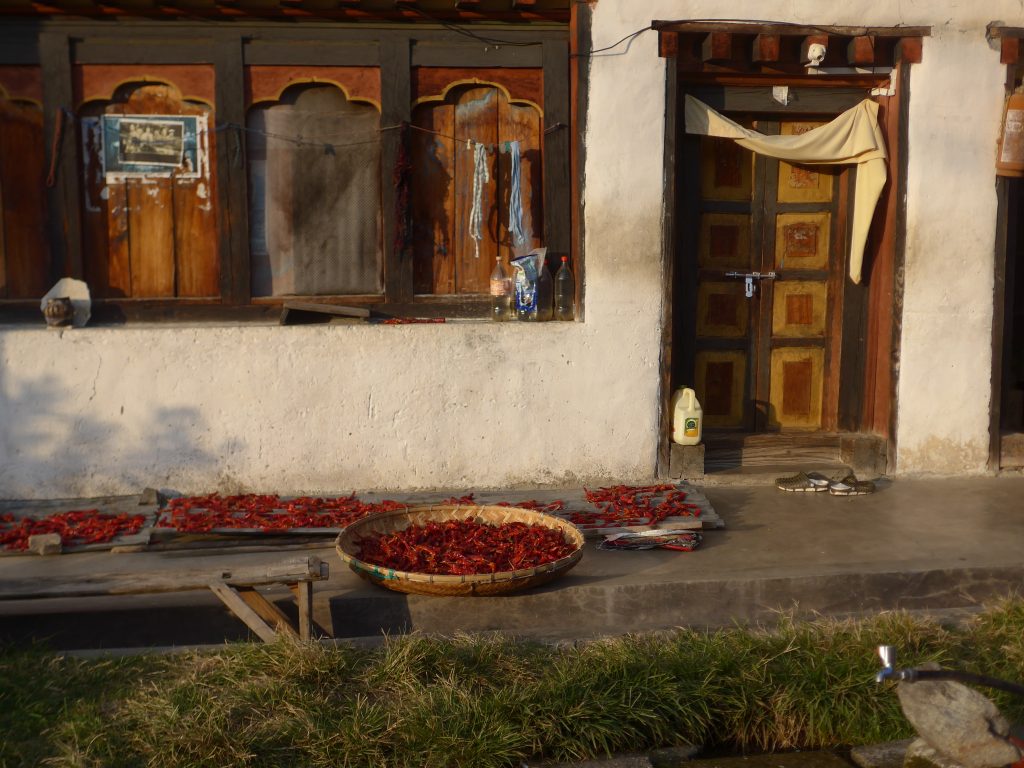
Pema found me and Jeremy perched on top of a large rock jutting out of a wall at the end of the village as he was taking his family to a restaurant for momos.
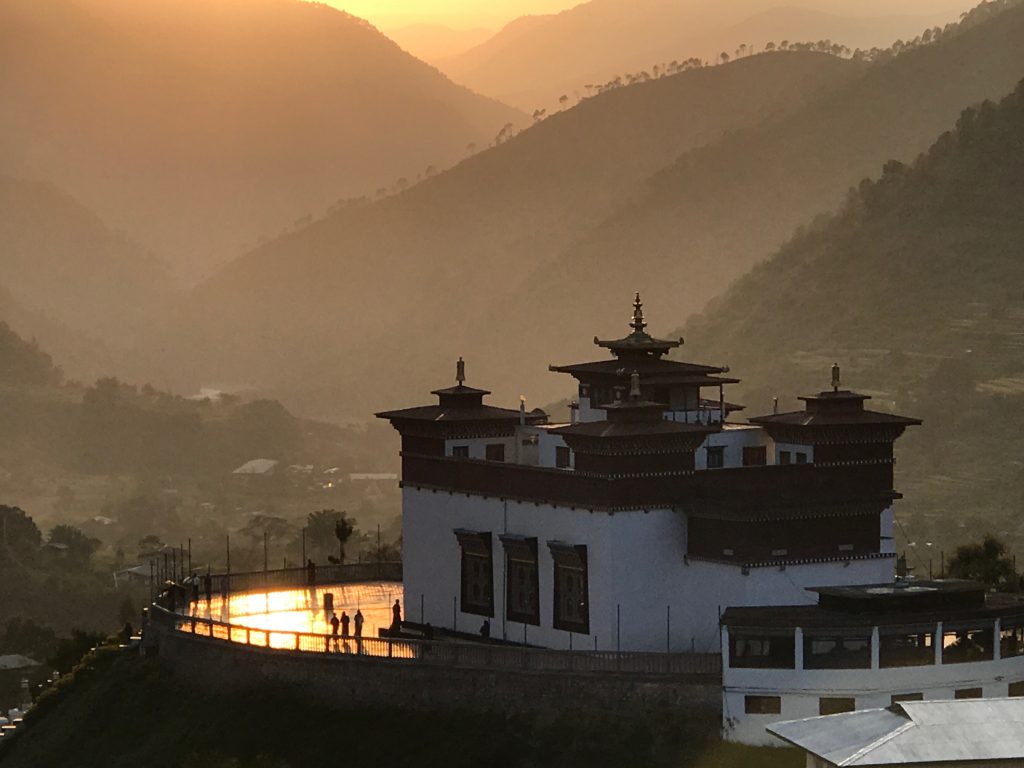
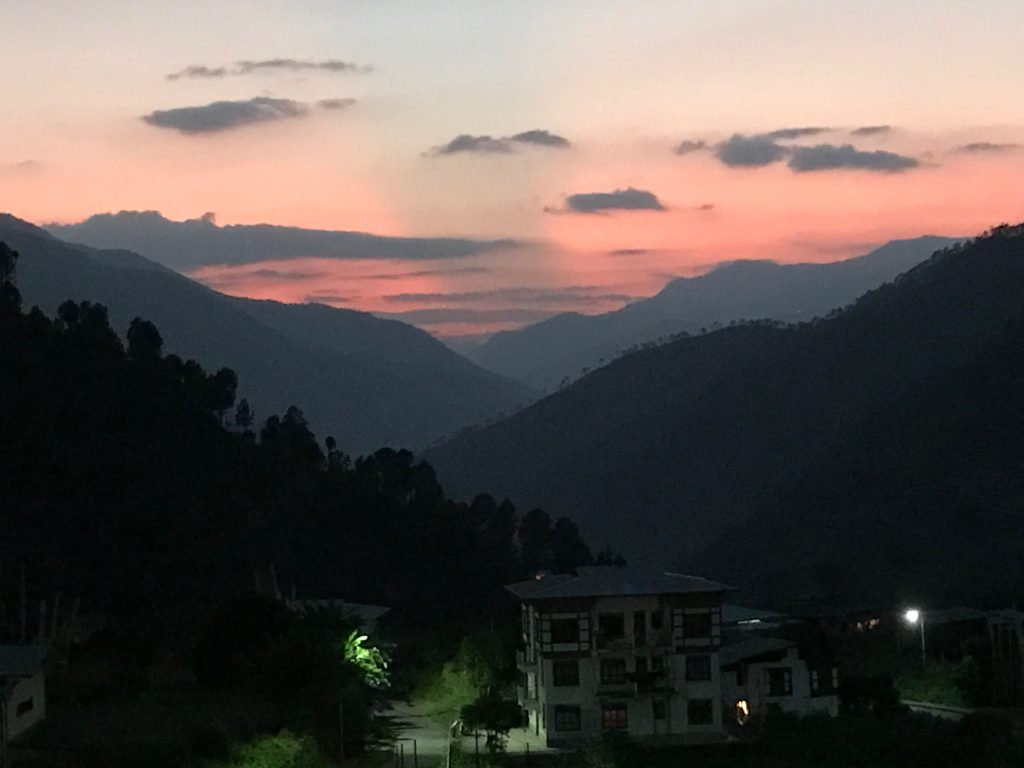
The next morning, Karma walked us through the temple, beginning with the stupas outside, with detailed explanations of the different meanings attached to each element of worship. He encouraged us to take photos and to videotape his explanations.
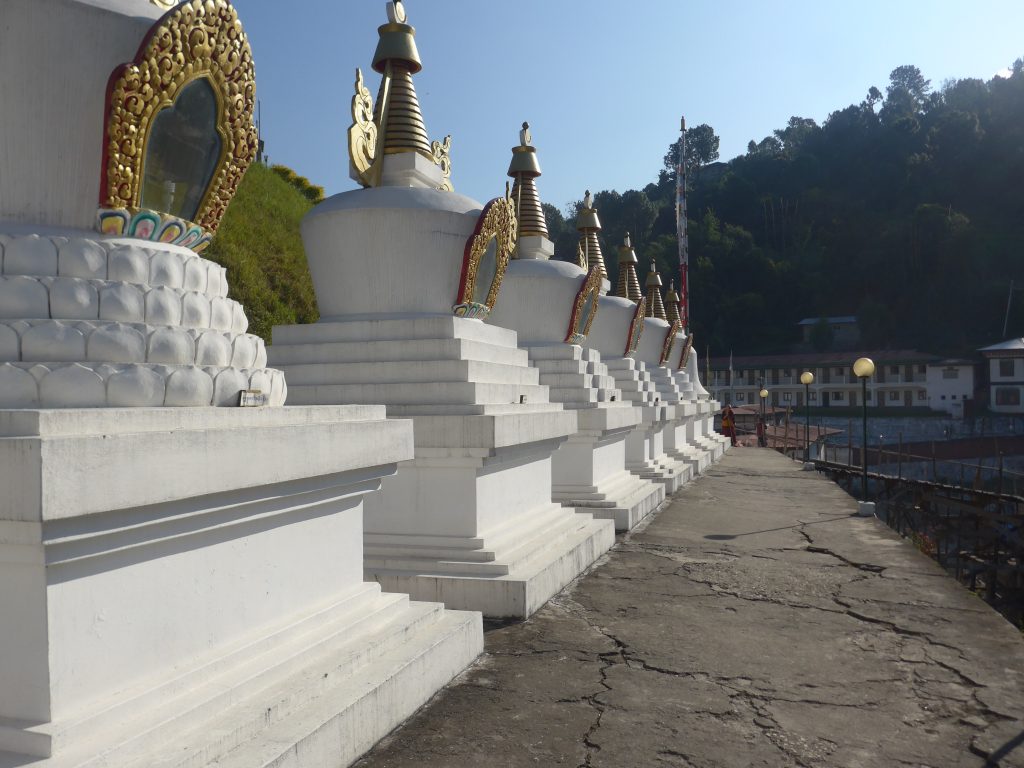
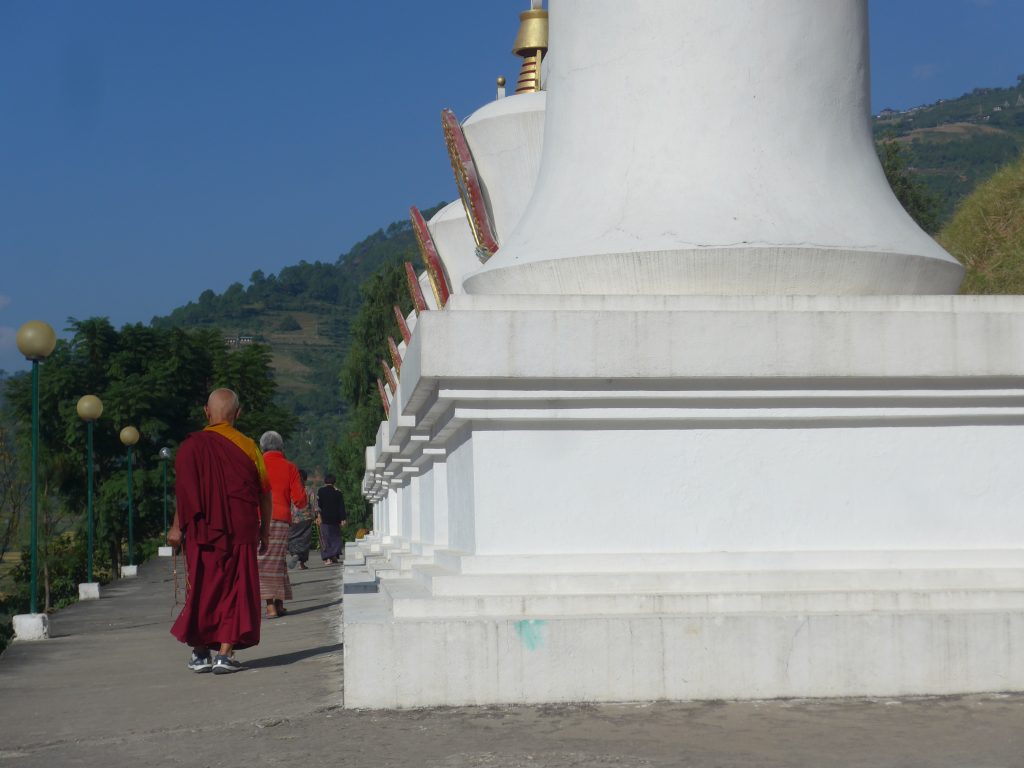
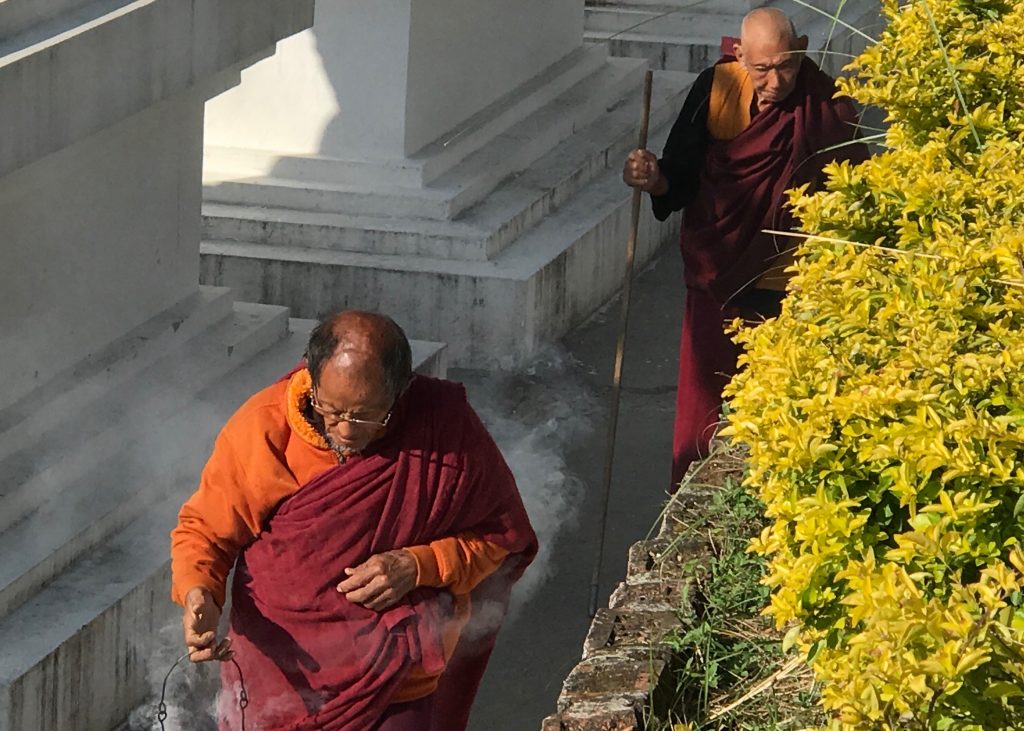
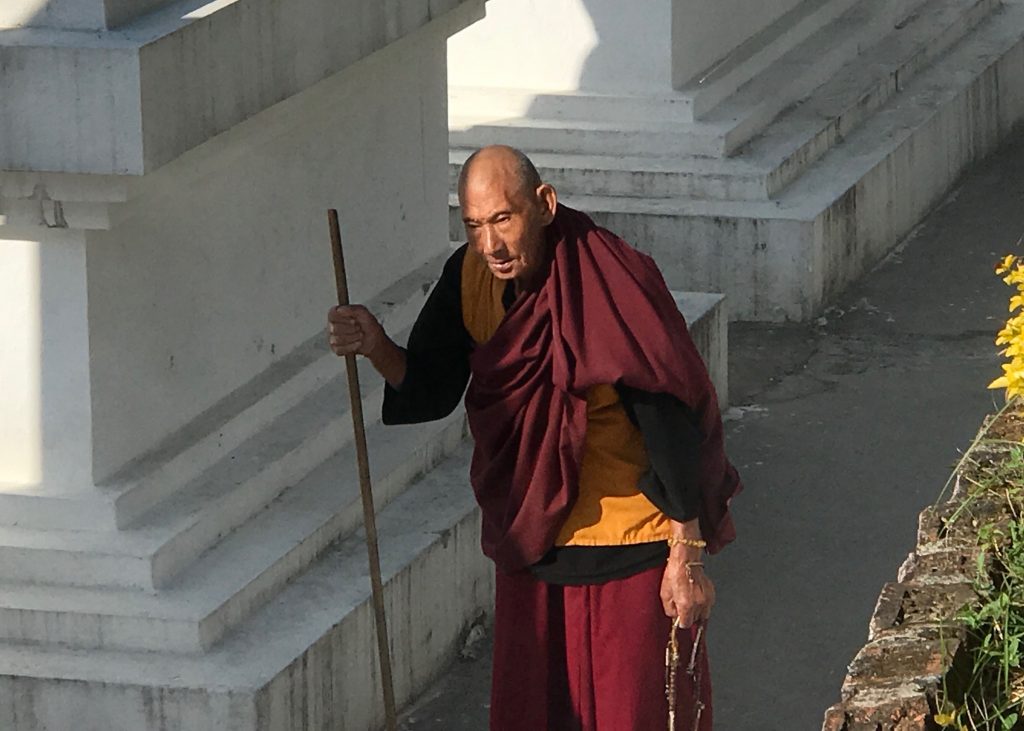
Unfortunately—perhaps because my phone is overloaded, as is my computer—the videos seem to have evaporated. We’ll just have to return to Rangjung in January or February….
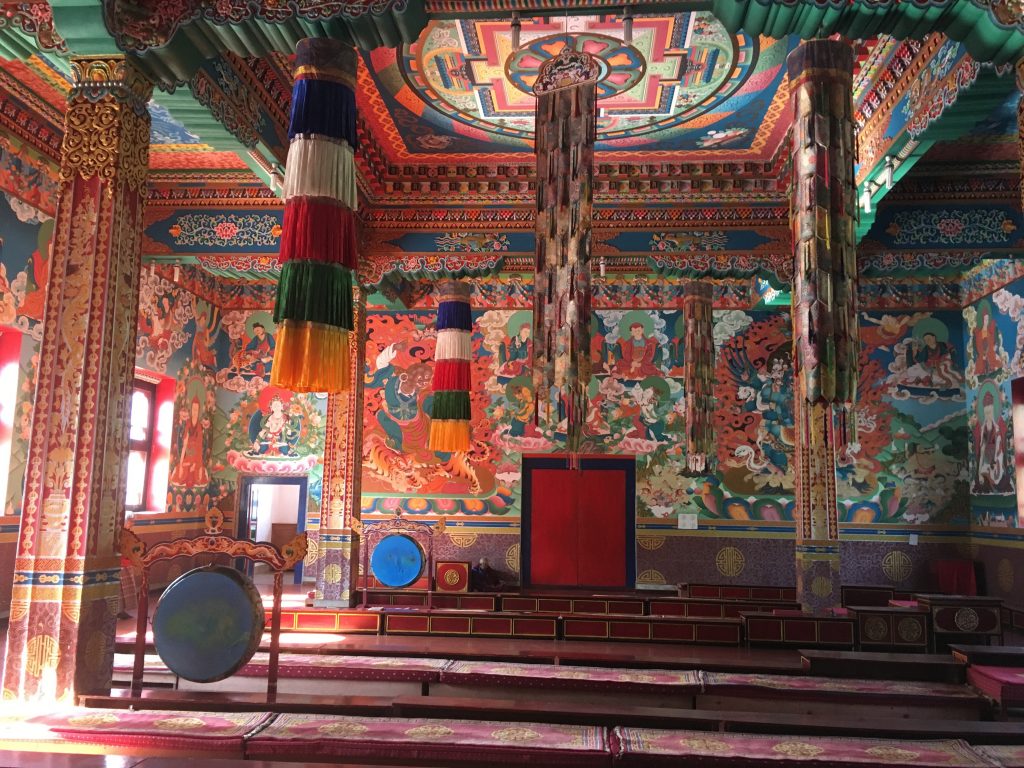
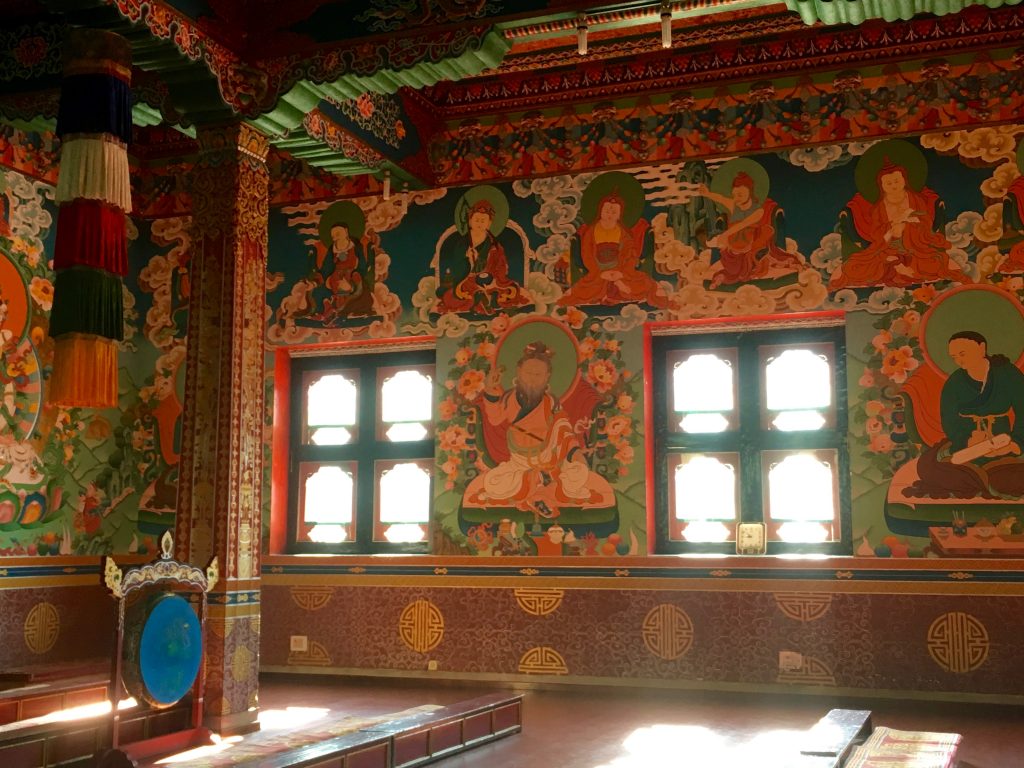
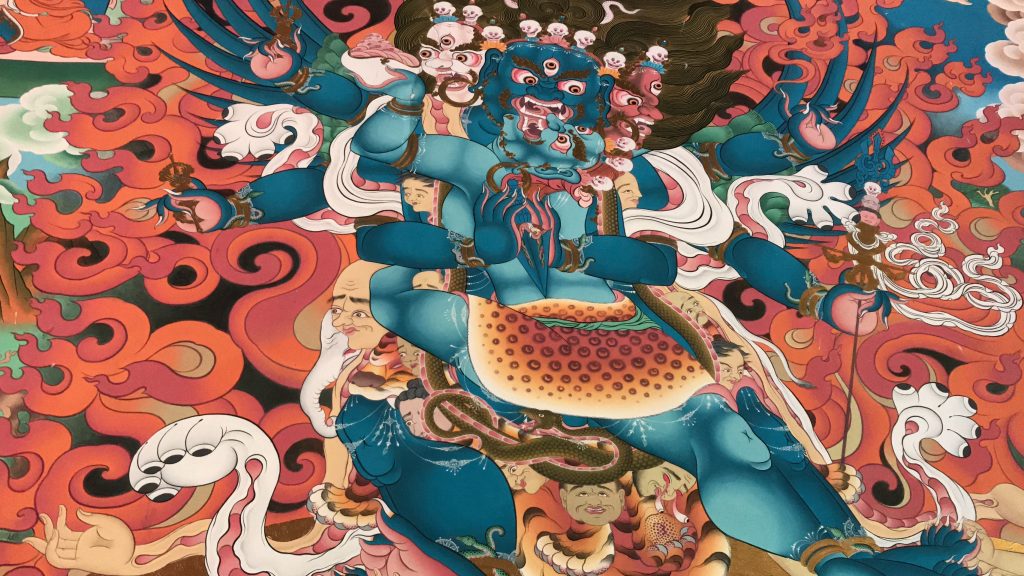
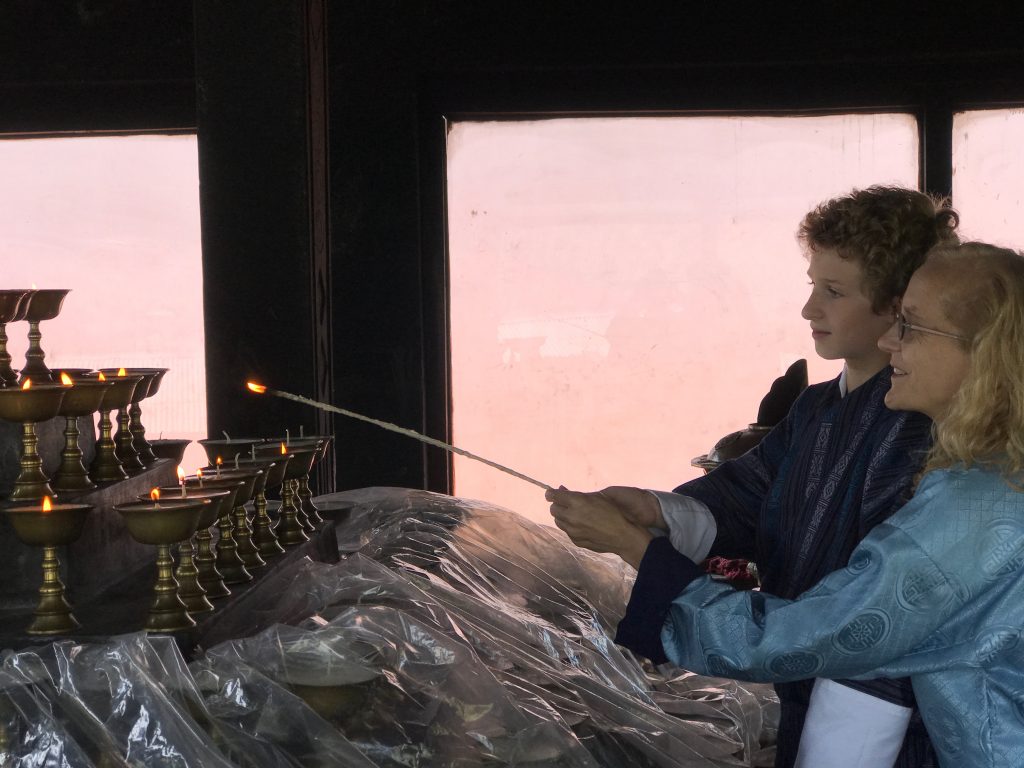
We lit butter lamps in an aspiration for world peace, and then we started back to Kanglung.
